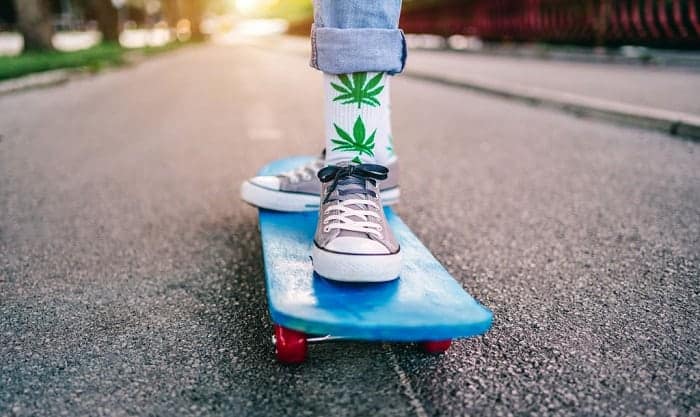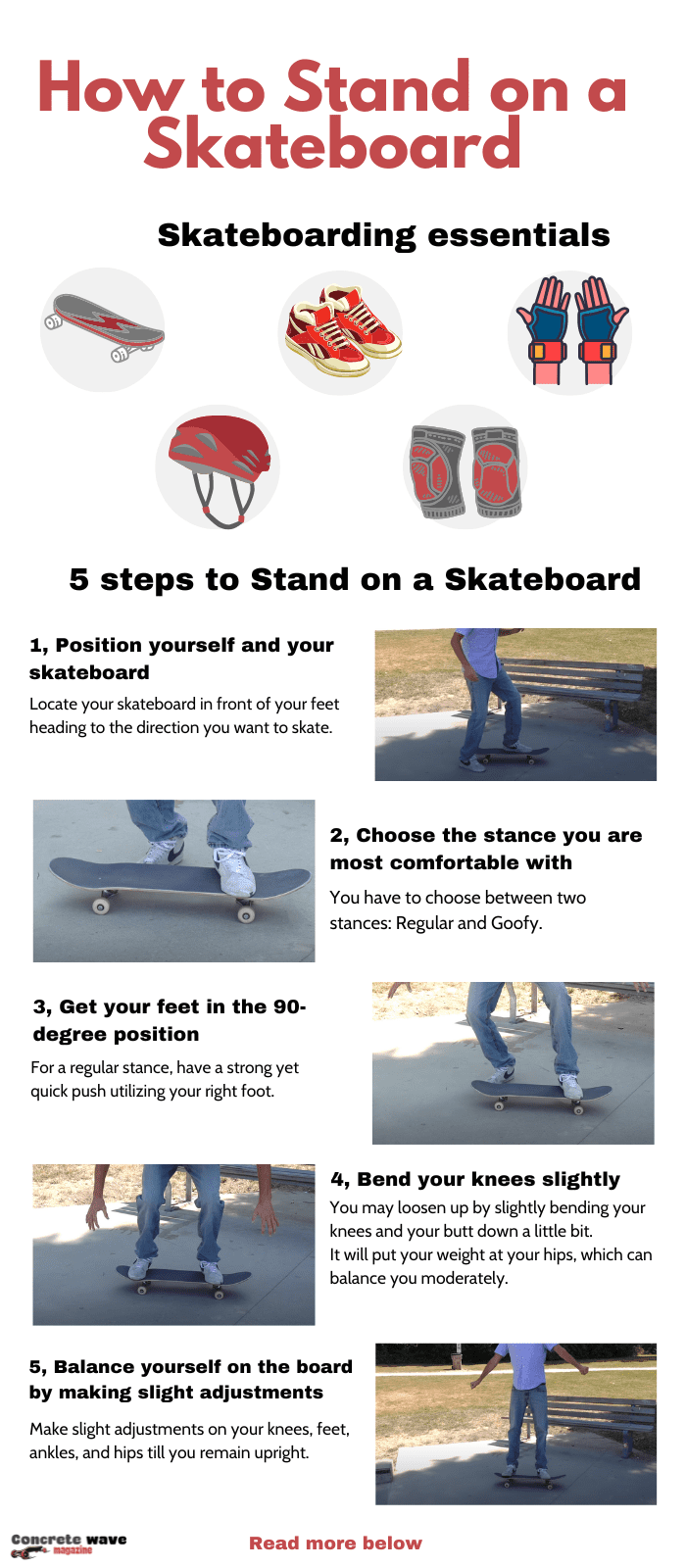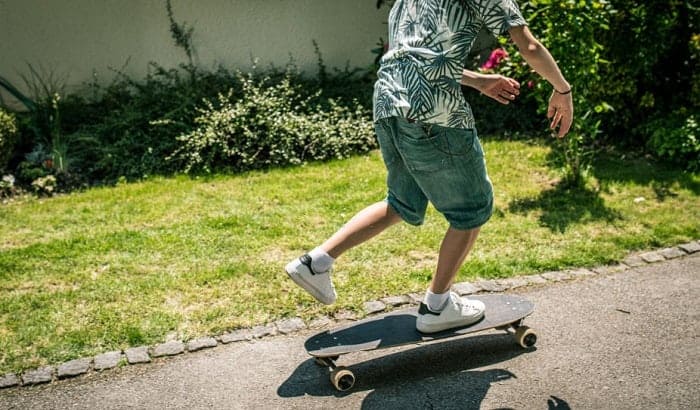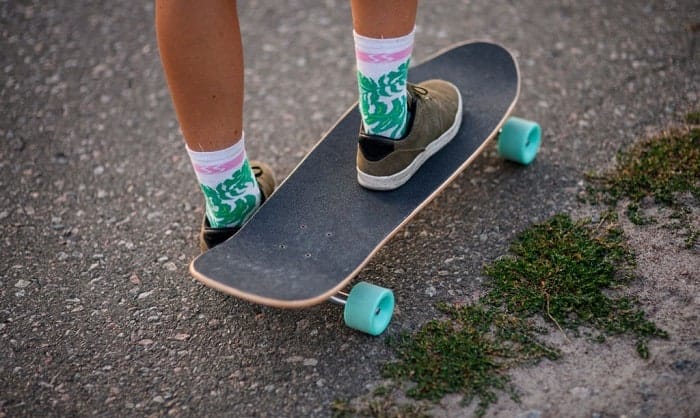Have you experienced falling off the first time you stand on a skateboard? Then, the skateboard flew rapidly like the wind at the neighbor’s house. What a sight!
This will indeed happen if you don’t know how to stand on a skateboard, which is also known as a blade. Many kids, teens, and young people like to skate using this blade because it is a fun activity and sports to do.
Meanwhile, before you can successfully skate on the road, in the street, or the park, you have to know the most important thing to do. And that is to stand on a skateboard. In this article, we will show you step-by-step how to do so. You may continue reading below.
Table of Contents
Things You Need for Your Skateboarding
Basically, the things that you need most for your skateboarding include the following:
- Skateboard
There are various types of skateboards. These include cruisers, classics, and longboards. For a starter, most experts recommend the classic skateboard with popsicle shaped decks. Also, you should choose a skateboard deck with a width that is proportioned to the size of your shoes. If your shoe size is 6.5 to 9 then choose a deck width of around 7.5 to 8 inches.
- Skate shoes
Good skate shoes prevent injuries, absorb shocks, and can provide grip. They must match your feet, provide support, and complement your skateboarding style. Recommended skate shoes are suede shoes. This is because they offer a good board feel and last longer.
- Skate park, roads, streets with even surfaces
You need a level or even surface for your skateboarding. Avoid surfaces with bumps or holes that may induce fall-off or accident. Go to the skate park or streets with even surfaces or parks with alleys.
For a beginner in skateboarding, there is a chance that you will experience falling-off. Thus, you should protect yourself. Protective gears that you will need in your skateboarding are the following:
- Knee pads
Knee pads are highly recommended for a beginner skateboarder. These pads can protect the rider from scrapes and cuts upon impact with the road. The vert knee pads are mostly used in skateboarding. The pad on the knee is made from hard plastic and the material that wraps the leg is made of thick foam.
- Helmet
In one instance you fall, the helmet will protect your head from severe injuries. A beginner always experiences falls that may result in concussions and injuries.
- Elbow pads
Elbow pads are other gears that you must have when skateboarding. These will keep your elbows and arms from being broken in case you fall sideways or backward.
- Wrist guards
If you fall forward and use your hands to counteract your fall, you might have cuts or injuries on your hands or wrist. To prevent this from happening, you may use wrist guards.
How to Stand on a Skateboard Victoriously
Now, you are geared up and ready for your skateboarding. Learn now how to stand first on the skateboard. Follow these steps:
1. Position yourself and your skateboard
Brace yourself with confidence and ready yourself for skateboarding. Locate your skateboard in front of your feet heading to the direction you want to skate. The direction of your head will also lead your body and feet to where you are heading or moving. Your skating location should have soft terrain if possible, as it will hurt less if you fall.
2. Choose the stance you are most comfortable with
The two stances that are used in skateboarding are regular and goofy. You have to choose which stance you are most comfortable with. If you prefer your left foot forward at the front of the board just behind the front wheels, then you have chosen the regular. Meanwhile, your right foot will do the push then roll.
In the goofy stance, your right foot is located in front of the board and your left foot will do the pushing. If you are not sure which one is the comfiest for you, try both stances. And then determine which one do you prefer. Your feet must be comfortable in pushing, getting on, and then rolling or sliding, which are the three basic things your feet and your board must do.
3. Get your feet in the 90-degree position
Once you have chosen your stance, you may push a little bit using your foot. For a regular stance, have a strong yet quick push utilizing your right foot. Your board will move forward a little. Then, hop slightly and land your feet in a 90-degree position. This will make your rolling safe. Also, experts advise putting your feet opposite of the front and back bolts of the board just like in the image below.
4. Bend your knees slightly
You may loosen up by slightly bending your knees and your butt down a little bit. In this manner, you can make corrections easily. It will put your weight on your hips, which can balance you moderately. When you fall, you can also easily put your arms on the floor and avoid injuries.
5. Balance yourself on the board by making slight adjustments
Balance yourself while you are standing on the board before you roll. Make slight adjustments on your knees, feet, ankles, and hips till you remain upright. In this manner, you can also control your board and your movements. Once you can stand on the board comfortably, you may start pushing, getting on, and rolling.
Conclusion
Learning how to stand on a skateboard is the beginning of your fun and exciting exploration of skateboarding. Simply, follow the above steps and enjoy watching the video. Then, you will be able to stand upright on your skateboard.
Feel free to comment or ask questions in the box below. Your thoughts are greatly appreciated. Also, we are pleased to answer all your questions. Have great fun skateboarding!
In addition, there are many other interesting tricks you can learn more about if you are confident in your ability. Such as drop in, jump, or manual on a skateboard.

I am Michael, and I have been enjoying this fun sport for seven years. And nothing is better than having a community to share our passion for those thrilling tricks. I am ready to tell you all I know about skateboarding, showing you how to choose a good board and trick to start and how the practice goes. Stay tuned!





